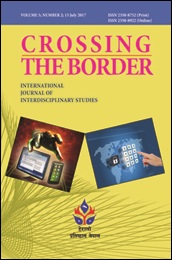Cybercrime and Security in Nepal: The Need for Two-Factor Authentication in Social Media
DOI:
https://doi.org/10.3126/ctbijis.v5i2.18436Keywords:
Cybercrime, cyber security, cyber mechanism, social media, two-factor authenticationAbstract
History of using computers is not long enough in Nepal. It was started in around 1995, but it got easier for us to access to using computers after 2000. We had no easy access to telephone and internet even before 2006 due to the Maoist Insurgency. In 2006, the users of Internet were 1.1% of the total population of Nepal, which reached around 17.2% at the end of 2016. With this rapid increment of internet users, risk of misuse such as cybercrime has increased through the use of internet. This paper thus will describe in detail about the cybercrime and security and authenticity related issues.
Crossing the Border: International Journal of Interdisciplinary Studies 5(2) 2017: 31-36

